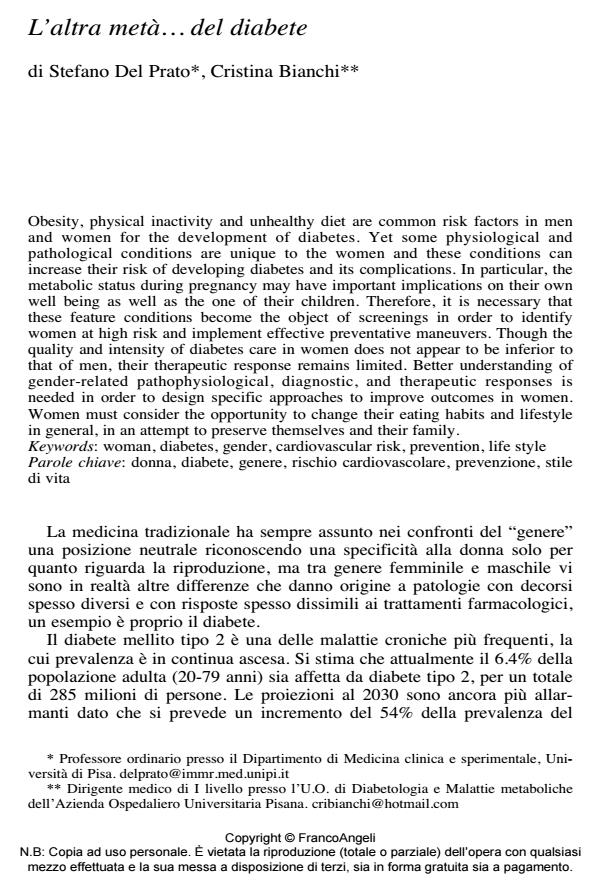L’altra metà.. Del diabete
Journal title SALUTE E SOCIETÀ
Author/s Stefano Del Prato, Cristina Bianchi
Publishing Year 2014 Issue 2014/1
Language Italian Pages 17 P. 58-74 File size 902 KB
DOI 10.3280/SES2014-001006
DOI is like a bar code for intellectual property: to have more infomation
click here
Below, you can see the article first page
If you want to buy this article in PDF format, you can do it, following the instructions to buy download credits

FrancoAngeli is member of Publishers International Linking Association, Inc (PILA), a not-for-profit association which run the CrossRef service enabling links to and from online scholarly content.
Obesity, physical inactivity and unhealthy diet are common risk factors in men and women for the development of diabetes. Yet some physiological and pathological conditions are unique to the women and these conditions can increase their risk of developing diabetes and its complications. In particular, the metabolic status during pregnancy may have important implications on their own well being as well as the one of their children. Therefore, it is necessary that these feature conditions become the object of screenings in order to identify women at high risk and implement effective preventative maneuvers. Though the quality and intensity of diabetes care in women does not appear to be inferior to that of men, their therapeutic response remains limited. Better understanding of gender-related pathophysiological, diagnostic, and therapeutic responses is needed in order to design specific approaches to improve outcomes in women. Women must consider the opportunity to change their eating habits and lifestyle in general, in an attempt to preserve themselves and their family.
Keywords: Woman, diabetes, gender, cardiovascular risk, prevention, life style
Stefano Del Prato, Cristina Bianchi, L’altra metà.. Del diabete in "SALUTE E SOCIETÀ" 1/2014, pp 58-74, DOI: 10.3280/SES2014-001006